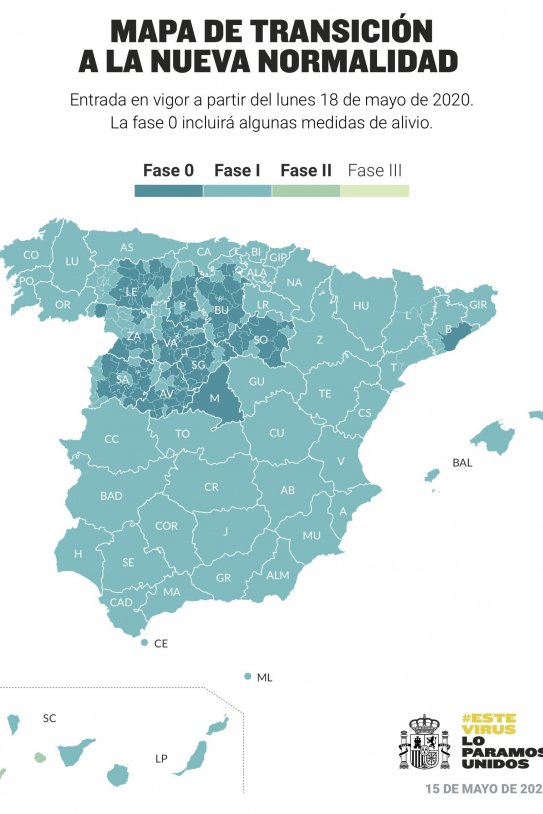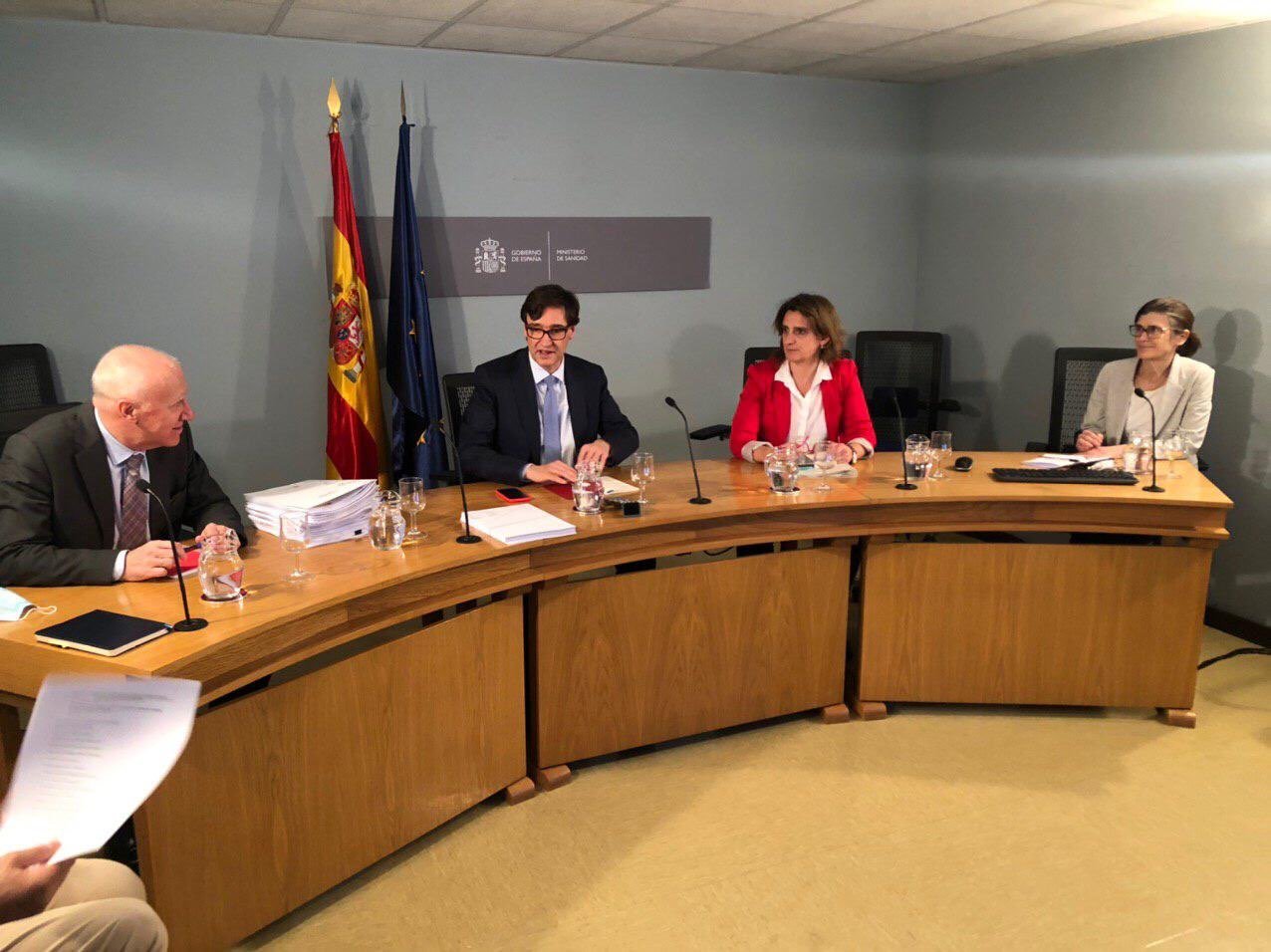The Spanish health ministry has accepted almost all of the Catalan government's coronavirus de-escalation proposal. From next Monday, May 18th, the health areas of Girona, Lleida and Central Catalonia will move to Phase 1 of Spain's four-phase process to ease out of the coronavirus lockdown. Two counties in the outer part of metropolitan Barcelona - Garraf and Alt Penedès - will do the same. All these areas will join the health areas of Camp de Tarragona, Terres de l'Ebre and Alt Pirineu-Aran in Phase 1. For its part, Barcelona and its metropolitan area will move to an intermediate phase, dubbed 'Phase 0.5'. In the Catalan capital and its surroundings some restrictions will be lifted, but not all. The same will occur throughout the Spanish state in other areas that aren't yet deemed ready to move to Phase 1.
Thus, this is also the situation for the Community of Madrid - the Spanish capital and its metropolitan region - which for the second consecutive week has asked to move to Phase 1, because it considered that "it met all the requirements." According to Spanish health ministry epidemiologist Fernando Simón, Madrid "will remain in Phase 0 after a major discussion". While highlighting the "great progress" and "excellent work" being made in the Spanish capital, Simón also stressed the "particular characteristics" of this territory, the most severely affected by the pandemic in Spain. Approximately 30% of the Spanish population will continue in phase 0 - albeit, with the "0.5" modifications. As well as metropolitan Barcelona and Madrid, a large part of Castilla y León also remains in this phase.
The Catalan government had requested that Barcelona and its metropolitan area be allowed to make some progress in the deconfinement process while still not qualifying for Phase 1, and this has been permitted. Among the activities allowed in the intermediate solution granted are: the opening of small businesses without prior appointment, and of street markets in the open-air with limitations on capacity; funeral wakes for a limited number of relatives; and the opening of places of worship, libraries or museums, with capacity restrictions. However, some important Phase 1 changes will still be banned: it will not be possible to meet with up to ten people or for the terraces of bars and restaurants to open, even partially.
The Valencian Country will move completely to Phase 1 on Monday. The 14 of its 24 health departments that had been left in Phase 0 last week are now able to advance. In the Balearic Islands, Formentera already moves to Phase 2, the same as the the islands of El Hierro, La Graciosa and La Gomera in the Canaries.
Two more of Spain's autonomous communities will move all their Phase 0 areas into Phase 1: Andalusia and Castilla-La Mancha. As for Castilla y León, 42 of its relatively-small basic health areas will be in Phase 1 from Monday, but much of its territory will continue in Phase 0.
Population wise, from Monday around 70% of Spaniards will be in Phase 1 and 30% will remain in Phase 0. Only 45,000 people living on four small islands will be able to enjoy Phase 2.

What's allowed in Phase 0.5?
Among the activities allowed in Phase 0.5 are the opening of small businesses without prior appointment, and of street markets in the open-air with limitations on capacity; funeral wakes for a limited number of relatives; and the opening of places of worship, libraries or museums, with capacity restrictions. These changes are modeled on those proposed by the Catalan government.
However, some important Phase 1 changes affecting social contact will still be banned: it will not be possible to meet with up to ten people or for the terraces of bars and restaurants to open, even partially. The exact terms will be detailed in a ministerial order this Saturday.
Ayuso on the offensive
Immediately after learning of the Spanish health minstry's decision, Community of Madrid president Isabel Díaz Ayuso denounced that "the Spanish government is not allowing Madrid to move to Phase 1 and it will continue to be paralyzed." Ayuso affirmed that "there is no technical explanation" for the decision, that "we are not the region with the highest percentage of infection", that "we are ready" and that "Madrid has met the criteria". She warned that "our businesses are being ruined and we are losing about 18,000 jobs every week."
The only part of Catalonia's proposal not accepted by Salvador Illa's ministry was the plan for the county of Baix Montseny, part of metropolitan Barcelona, to move to Phase 1. The Catalan authorities had requested that the largely rural Baix Montseny, at the north-eastern extreme of the Northern Metropolitan health district, be allowed to pass to Phase 1, along with the counties of Garraf and Alt Penedès. This proposal was accepted for the other two counties but it was decided that Baix Montseny will continue in the modified Phase 0 for another week.
To find out which Catalan health region a municipality belongs to, and which phase of the process it is in, the Catalan health service website provides this page.
MAP | Coronavirus infections in Catalonia by municipalities and neighborhoods
GRAPHS & DATA | Latest coronavirus statistics for Catalonia and Spain

